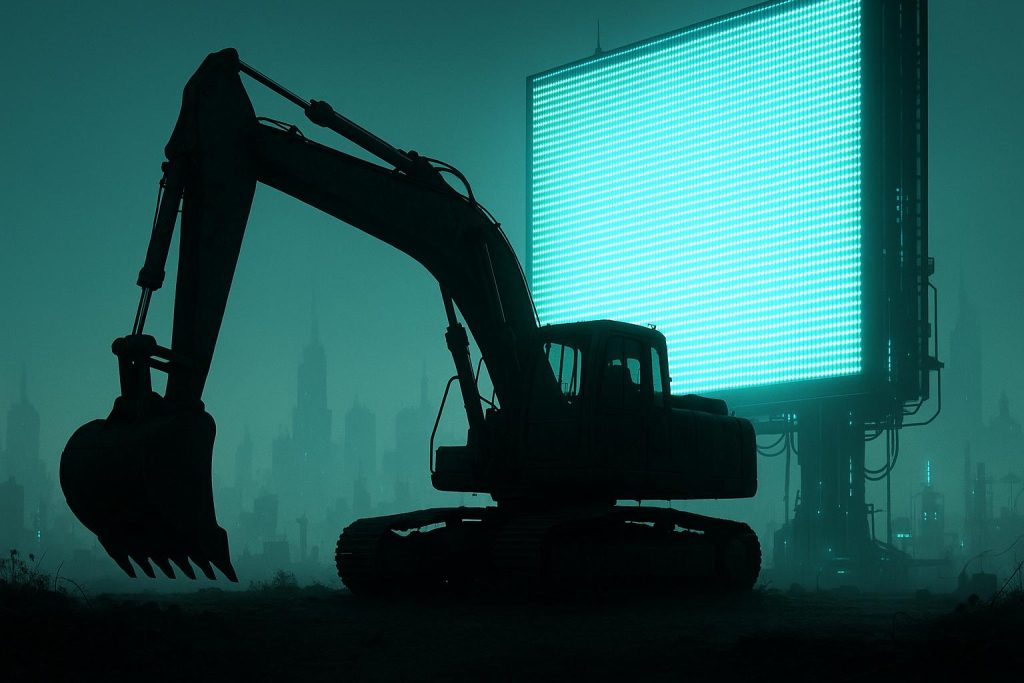Listen to the article
From traditional manufacturer to tech pioneer, Caterpillar is revolutionising heavy industry with AI, autonomous systems, and data-driven platforms, shaping a safer and more efficient future for mining and construction.
Caterpillar, a name long associated with heavy industrial machinery such as bulldozers and mining trucks, is rapidly transforming into a technology-driven company. Although traditionally renowned for its robust equipment, the $100 billion firm has strategically pivoted to embrace digital innovation and autonomy, reshaping its business beyond physical hardware.
The company’s digital evolution began with the insight that its heavy machinery was a rich source of operational data—tracking everything from fuel consumption to hydraulic pressures and maintenance needs. This data is now aggregated through its Helios cloud platform, which connects over 1.5 million Caterpillar assets worldwide and processes more than 50 billion data points monthly. Such real-time analytics empower customers to anticipate equipment failures, optimise maintenance schedules, and cut downtime, often enhancing productivity by 20 to 30 percent and halving maintenance expenses. This suite of digital services positions Caterpillar’s tech-driven revenue to reach an estimated $28 billion by 2026, rivaling prominent pure technology companies.
Caterpillar’s VisionLink platform exemplifies this technological shift, offering tools that deliver critical insights into machine health and operational performance. Recent upgrades to VisionLink Productivity have introduced features like Cat Grade and Compact, Operator Coaching, and e-Ticketing. These innovations integrate 3D design files for improved jobsite accuracy, provide operational guidance for equipment use, and streamline reporting processes, respectively—further boosting equipment utilisation and management efficiency. VisionLink, accessible via mobile and desktop, consolidates essential data such as machine locations, loading events, and fuel consumption to support data-driven decision-making, making it a vital part of quarry and aggregates operations.
Beyond equipment monitoring, Caterpillar is aggressively advancing autonomy in heavy machinery. It has invested over 30 years in developing self-driving capabilities for mining trucks and excavators. Its MineStar suite enables the remote, precise operation of entire fleets, minimising human intervention. The latest collaboration with Luminar, a lidar sensor specialist, reflects this commitment. Luminar’s Iris lidar sensors are particularly adept at operating in dusty and challenging environments common to mining and construction. Caterpillar plans to equip its Cat Command autonomy platform with these sensors, starting with quarry trucks on highways, enhancing obstacle detection and navigation. This builds on an impressive track record of autonomous trucks that have already logged over 207 million miles and moved more than 9.3 billion tonnes of material across three continents.
Safety remains a critical driver for Caterpillar’s automation push. According to the US Centers for Disease Control, workplace fatalities in heavy industry cost a median of $1.42 million per incident, excluding property and environmental damage. By decreasing the reliance on human operators in hazardous conditions, Caterpillar’s autonomous technology aims to significantly reduce such costly accidents. Luminar itself, despite broader economic challenges in the lidar sector, has secured partnerships with automotive and aerospace giants, highlighting the strategic value of its technology.
Caterpillar is also playing a pivotal role in supporting the AI economy through its power generation systems. Its massive generators, with engine capacities between 1,000 and 6,000 horsepower, serve as crucial infrastructure for data centres and industrial power needs. These units generated $28 billion in sales in 2024, nearly half of Caterpillar’s machinery revenue. Additionally, the company is exploring cleaner energy solutions, including battery-powered loaders and mobile charging systems, aligning with broader sustainability goals.
Furthering its comprehensive technology suite is Caterpillar’s MineStar Edge—a cloud-based mine management platform designed to deliver real-time operational data via machine learning and artificial intelligence. This scalable platform facilitates enhanced efficiency and resource optimisation for mining operations of all sizes by integrating various data sources for a holistic view of equipment and asset performance. This initiative underscores Caterpillar’s broader efforts to integrate IoT and AI technologies into traditional heavy equipment industries.
Complementing this, the Cat Precision Mining initiative integrates sensors and data analytics across mobile and fixed mining assets, realising the mine-to-mill concept. This real-time data aggregation enhances productivity, lowers costs, and promotes safer, more sustainable mining practices by supporting intelligent decision-making throughout operations.
Overall, Caterpillar’s transformation from an industrial machinery manufacturer into a high-tech innovator reflects the growing intersection of traditional industries with digital technologies. Its ongoing investments in data analytics, autonomous systems, and AI-driven management platforms herald a future where heavy equipment is as much about software and connectivity as raw power and durability.
📌 Reference Map:
- Paragraph 1 – [1]
- Paragraph 2 – [1], [4], [5], [3]
- Paragraph 3 – [1], [7], [2]
- Paragraph 4 – [1], [7]
- Paragraph 5 – [1], [7]
- Paragraph 6 – [1]
- Paragraph 7 – [2], [6]
- Paragraph 8 – [6]
- Paragraph 9 – [1], [4], [5], [2], [6]
Source: Fuse Wire Services


